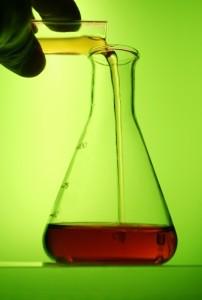The label ‘Made in China’ is not typically associated with premium products- except as a OEM- but where it relates to tea, not only is Chinese tea comparable, it is superior to teas produced in any part of the world.
The claim of being ‘best in’ any field is often fraught with controversy and disagreement and is subjected to personal preferences but this is an objective evaluation based on facts and logic that the intelligent reader can assess the merits of the arguments.
Competition

In the tea industry, farmers and producers have tea competitions at national, provincial, county and even village levels. The teas are assessed on their production quality, appearances, aroma and taste- and not merely taste as many have misinformed and been misinformed. For pride and prestige, farmers constantly hone their skills and can scarcely afford to rest on their laurels.
This is in contrast with areas where a handful of major players effectively control the market and their focus is more on cost control and production yield than quality.
Research and Innovation

That could not be further from the truth. In fact, China has the most amount of research devoted to the field of tea. There are at least 36 universities with specializations in tea and 47 tea research institutes as of 2006 (source Cha Xue Gai Lun by Zhou Ju Gen).
Researchers would investigate and research, cultivate new varieties, work with farmers and manufacturers to provide technical knowledge and publish commercial writings for the benefit of students of tea- commercial or otherwise. This is a far cry from the limited writings available in all other languages in the world.
The field of innovation is not limited to internal as well. Japanese machinery has been imported and adapted in the mechanization of tea production, such as steam machines used in ‘shaqing’. The ‘green style’ production is imported from Taiwan, commonly used in production of Minnan Oolongs.
As the tea industry in China develops internally, it keeps a watchful eye on global trends as well and adapts accordingly where appropriate.
Handmade artisan teas
China (and Taiwan) is among the few tea producing nations that continue to produce high quality teas by hand. While machinery lends efficiency and reduces reliance on labor, machines still fail to replicate the adroit movements of masters and experienced producers.
Take the example of arguably the most simplistic process in the production cycle- plucking of leaves. For countries focusing on commercial grade tea, it is simple- one bud to 2 leaves. A machine can handle that. Not so for quality productions where delicate tender buds are easily damaged by the cold steel or where only leaves above certain sizes and colors are picked.
While machine picked teas are common in China, those are for lower grade commercial offerings, not typically for the higher end tea.
And we haven’t even gotten to more complex procedures. The famous Longjing tea is roasted over a heated wok by hand to shape and dry accordingly in a 10 step procedure that can’t be mimicked by machinery.
While lower to mid-grade oolongs may be shaken by machines, the finest grade oolongs are entirely produced by hand; a procedure that is generally handled by the masters and not delegated to apprentices.
This leads to a huge disparity in prices of which brings us to the next point:
A Gift Culture
Historically, the finest teas are reserved for Emperors, either for their own consumption or to show favor to visiting rulers or loyal officials. Though the dynastic monarchy has been abolished for just over a century, the practice of tea as the finest gifts remains prevalent today.
Government officials and businessman alike would snap up the most famous varieties as gifts to their valued associates. Affluent individuals would purchase premium tea or tea sold as at a premium to their friends or family members as a sign of respect.
Coupled with the growing affluence of China over the past 3 decades, this culture contributed an unmatched willingness to pay top dollar for teas of quality and prestige. This is in contrast with most other tea producing countries- notable exceptions being Japan and Taiwan- where tea is largely a commodity, a daily offering that is historically grown for external daily consumption, not a luxury good.
While price is not necessarily indicative of quality, a willingness to pay will attract quality far more readily than not.
Others
There are a myriad of other reasons which we will list a handful
i) Tea originated in China and has a longer history of consumption than the rest of the world
ii) All 6 major categories of tea were discovered in China first and China remains the only nation to produce all 6 categories
iii) China produces the most varieties of tea with the greatest range of production methods and techniques
iv) Natural habitat and environment for tea plant
Hence while ‘made in China’ is typically not associated with the highest quality- at least at point of writing – in the field of tea it is. This is not to say every tea produced in China is stellar- in fact there are many which are of ludicrously low quality- but where we enter into the discussion of the finest quality of tea, Chinese teas will dominate the discussion for reasons stated above.
Disclaimer:
We do not claim Chinese tea it the best because we sell it but rather we sell Chinese (and Taiwanese) tea because we believe it is the best for the reasons stated above. Besides, we’re far from the only guys to sell Chinese tea around.
